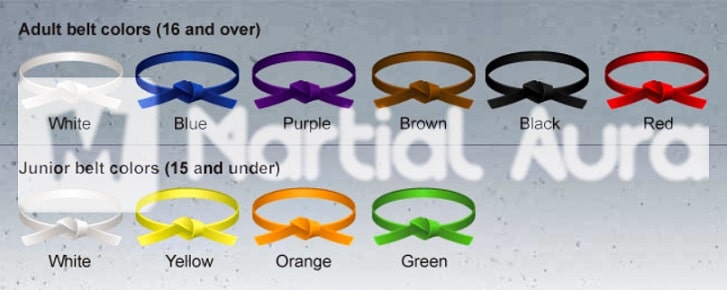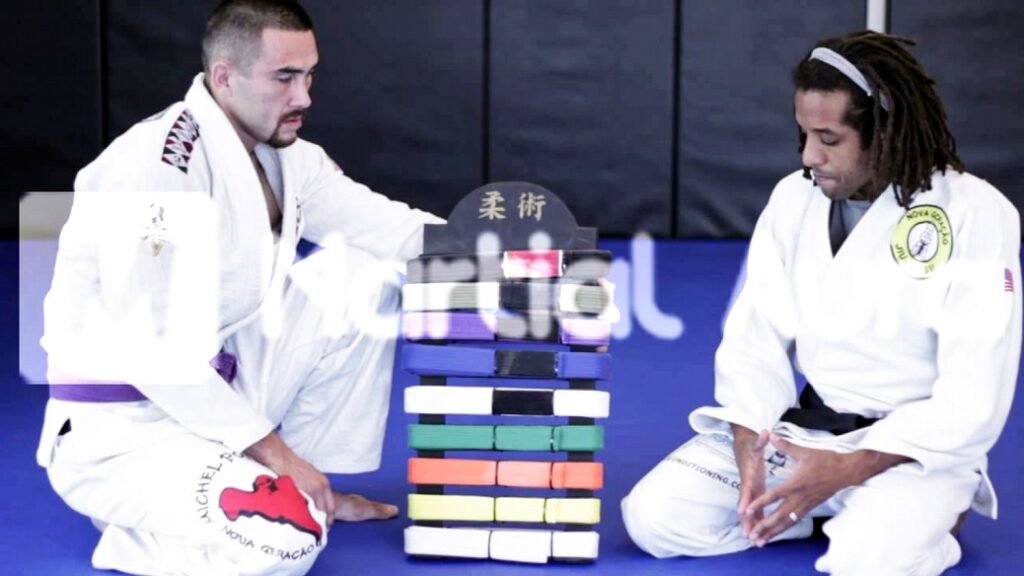Brazilian Jiu Jitsu (BJJ) is a popular martial art known for emphasizing ground fighting and submission techniques. One key aspect of BJJ is its Jiu Jitsu belt ranks, which help to classify practitioners based on their skills and experience. This ranking system is not just about colors; it also represents a journey of learning, discipline, and dedication. In this article, we will explore the Jiu-Jitsu belt ranks in depth, examining this system’s history, structure, and significance.
The History of Jiu Jitsu Belt Ranks

Origins of Jiu Jitsu
Brazilian Jiu Jitsu has roots in Japanese Jiu Jitsu and was developed in Brazil in the early 20th century. The art emphasizes technique over strength, making it accessible to people of all sizes. The ranking system in BJJ was influenced by other martial arts, particularly Judo, which uses a similar belt system. As BJJ evolved, it adopted a more structured BJJ belt system, resulting in the current ranking framework.
Adoption of Belt Ranks in BJJ
Jiu-jitsu belt ranks became standardized over time. In the 1950s, the Brazilian jiu-jitsu belt system was established, introducing colors to represent different skill levels. This system helped practitioners set goals, track progress, and foster a sense of achievement. The adoption of belt ranks also created a sense of community among students, as they could see the journey of their peers.
Understanding the Jiu Jitsu Belt Ranks

Overview of Belt Colors
The jiu-jitsu belt system consists of several colors, each representing a different level of proficiency. Here are the primary belt colors:
- White Belt: Beginner level, focusing on the basics.
- Blue Belt: The first major promotion, where students develop their skills.
- Purple Belt: Intermediate level, with a deeper understanding of techniques.
- Brown Belt: Advanced practitioners who begin to mentor others.
- Black Belt: The highest belt in Jiu Jitsu, signifying mastery.
Detailed Breakdown of Each Belt Rank
Each belt rank comes with its challenges and expectations. Let’s explore what each rank means:
- White Belt: This is where every student begins. White belts learn basic techniques and principles. They are introduced to the jiu jitsu belt levels and start their journey.
- Blue Belt: To achieve this rank, students must demonstrate proficiency in fundamental techniques. The BJJ blue belt is a significant milestone, marking the transition from beginner to more advanced training.
- Purple Belt: At this level, students refine their techniques and start to develop their own style. The jiu jitsu purple belt indicates that the practitioner has a solid understanding of various positions and submissions.
- Brown Belt: This is a transitional phase, where practitioners enhance their skills and learn to teach others. The BJJ brown belt is often seen as a preparation stage for the black belt.
- Black Belt: Achieving the jiu jitsu black belt is a major accomplishment. It represents years of hard work and dedication. Black belts are expected to give back to the community by teaching and mentoring students.
Progression Through the Ranks

Time Requirements for Each Belt
The time it takes to progress through the BJJ ranks can vary. Here’s a general guideline:
| Belt Rank | Average Time to Achieve |
| White to Blue | 1-3 years |
| Blue to Purple | 2-4 years |
| Purple to Brown | 1-3 years |
| Brown to Black | 2-5 years |
Many factors affect these time frames, including:
- Training frequency
- Quality of instruction
- Participation in competitions
Promotion Criteria
Promotions in BJJ are based on various criteria. Instructors look for:
- Technical proficiency: Mastery of techniques and strategies.
- Sparring ability: Performance during live rolling sessions.
- Attitude: Commitment to learning and helping others.
Students are encouraged to participate in seminars and competitions, as these experiences can significantly impact their growth and progression through the jiu jitsu belt system.
The Role of Belt Ranks in Jiu Jitsu

Psychological Impact of Jiu Jitsu Belt Ranks
The BJJ belt ranks, in many ways, hold significant psychological importance. For many practitioners, each belt not only signifies hard work and perseverance but also represents personal growth. Furthermore, achieving a new rank can boost confidence and motivate students to continue their training journey. However, it’s essential to remember that each belt is a stepping stone, and the journey is ongoing.
Community and Camaraderie
Belt ranks, above all, foster a strong sense of belonging within the dojo. Practitioners connect with peers at similar levels, sharing experiences and knowledge along the way. This camaraderie, in turn, helps build lasting friendships. Furthermore, as students advance through the jiu jitsu belt levels, they often take on mentorship roles, guiding newer students and, ultimately, contributing to the community.
Common Misconceptions About Jiu Jitsu Belt Ranks

Misunderstandings About Promotion Speed
Many newcomers to BJJ may believe that promotions happen quickly; however, this is rarely the case. In reality, advancing through the BJJ belt ranks requires both time and dedication. Students should focus on skill development rather than rushing for a new belt.
The Value of EachJiu Jitsu Belt Rank
Some may think that only black belts hold value in the Jiu Jitsu community. In reality, every belt rank has its importance. Each level, in essence, represents a unique set of skills and knowledge. Moreover, every practitioner should respect and appreciate their rank and the journey it represents.
Tips for Advancing Through Jiu Jitsu Belt Ranks

Setting Goals for Each Jiu Jitsu Belt Rank
To succeed in BJJ, it’s vital to set achievable goals. For each belt rank, consider:
- Specific techniques to master
- Sparring objectives
- Participation in competitions
Having clear goals can help practitioners stay motivated and focused.
Seeking Feedback and Continuous Learning
Feedback from instructors and peers is essential for growth; therefore, students should actively seek constructive criticism and reflect on their performance. Moreover, continuous learning through classes and seminars not only enhances skills but also keeps practitioners engaged.
Engaging in Competitions and Seminars
Participating in competitions, in particular, can accelerate learning, as competing exposes students to different styles and strategies. Additionally, seminars led by experienced practitioners offer valuable insights and perspectives. Both experiences are crucial for advancing through the BJJ ranks.
Conclusion
The Jiu Jitsu belt ranks system is, undoubtedly, a vital part of Brazilian Jiu Jitsu. Specifically, it provides structure, motivation, and a sense of community. Furthermore, each belt color represents a unique journey filled with challenges, learning, and growth. By embracing this journey, you can, ultimately, achieve mastery and personal development.
Whether you are just starting or are a seasoned practitioner, understanding the BJJ belt system helps you appreciate your journey and set realistic goals. Remember, while the belt you wear is just a symbol, it’s essential to recognize that the true value lies in the skills, friendships, and experiences you gain along the way.
Final Thoughts
If you are new to Jiu Jitsu, remember that everyone starts as a white belt. Embrace the journey, seek knowledge, and train with an open heart and mind. With perseverance and dedication, you will move through the ranks and discover the transformative power of Brazilian Jiu Jitsu.

James Wesley is a passionate martial arts enthusiast and the voice behind Martial Aura. With a deep love for UFC and combat sports, he shares expert insights and in-depth analysis on everything from fight strategies to athlete profiles. When he’s not writing, you’ll find him training or watching the latest fights, always learning from the best in the ring.






